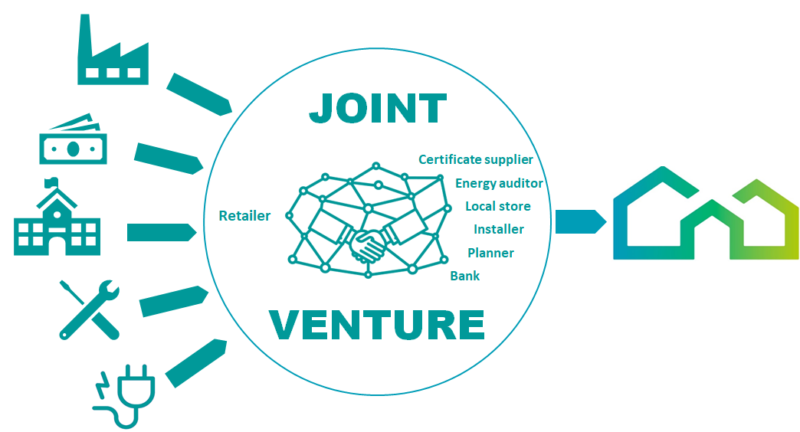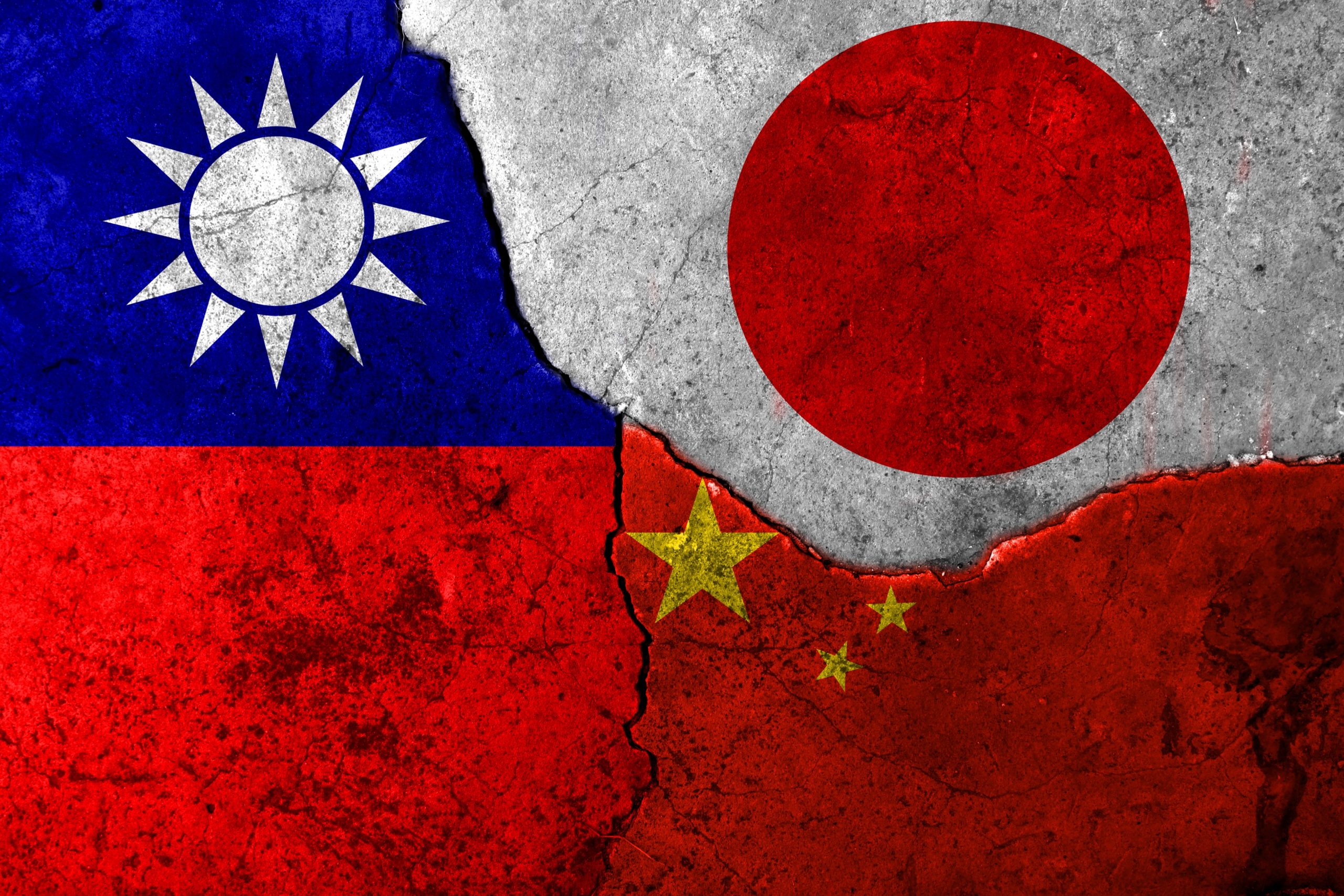[ad_1]
ABSTRACT
The business of wireless data is expected to grow in the region of 100-200 % per annum and the mobile communication industry agrees that wireless data services will form the foundation for future business. The enormous success of short messaging in many countries proves that people accept the benefits of non-voice services.
Enhanced Data Rate for Global Evolution (EDGE) is a technology that gives Global Systems for Mobile Communications (GSM) the capacity to handle services for the third generation of mobile telephony. It provides three times the data capacity of General packet Radio Service (GPRS). Using EDGE, operators can handle three times more subscribers than GPRS; triple their data rate per subscriber, or add extra capacity to their voice communications.
This article provides an overview of EDGE technology. In particular, starting from the introduction of this 2.5G technology I describe the core technical aspects and distinct features. I will provide a comparison with GPRS for data services and then a survey of the current state of this technology in Pakistan. I have also covered some benefits for operators and customers.
1. Introduction
The importance of wireless data and multimedia services both for business and end customers are increasing on an unparalleled scale. Enhanced Data Rates for GSM Evolution (EDGE) is a new radio interface solution and is based on an enhanced modulation. EDGE offers GSM network operators an evolution path to mobile data and multimedia services with a three fold increase of data throughput in the existing GSM spectrum. EDGE therefore provides an alternative for operators who do not have a Universal Mobile Telecommunication System (UMTS) license. Moreover it also represents a complement to UMTS for operators intending to first deploy UMTS only in densely populated areas, but who can also use EDGE to provide wide area coverage of future oriented 3G services. In the US market operators have chosen EDGE as the 3G solutions. [8].
We are presently experiencing the Wireless Application Protocol (WAP) as well as the higher transmission speeds of High Speed Circuit Switched Data (HSCSD), joined by the convenience of “always on-line” direct Internet connections with GPRS. [1]
EDGE, new radios interface technology with enhanced modulation, increases the HSCSD and GPRS data rates by up to three fold. EDGE modulation is going to increase the data throughput provided by the packet switched service even over 400 kbps per carrier. Similarly, the data rates of circuit switched data can be increased, or existing data rates can be achieved using fewer timeslots, saving capacity. Accordingly, these higher speed data services are referred to as EGPRS (Enhanced GPRS) and ECSD (Enhanced Circuit Switched Data).
EDGE, is a major improvement in GSM phase 2+. As a modification to existing GSM networks, EDGE does not require new network elements. [1]
In the US, for instance, EDGE is part of the IS-136 High Speed concept, which is one of the third generation Radio Transmission Technology (RTT) proposals from TR.45. EDGE is eventually going to be standardized which makes possible to achieve a global mobile radio system with many services characteristic to third generation systems.
2. Overview
The increased bit rates of EDGE put requirements on the GSM/GPRS network architecture. Figure. 1 illustrates the GSM/GPRS architecture, the shaded parts of which are discussed in this section. Other nodes and interfaces are not affected at all by EDGE introduction. An apparent bottleneck is the A-bis interface, which today supports up to 16 kb/s per traffic channel. With EDGE, the bit rate per traffic channel will approach 64 kb/s, which makes allocation of multiple A-bis slots to one traffic channel necessary. Alternative asynchronous transfer mode (ATM) or IP-based solutions to this problem can also be discusses.
One important fact is, however, that the 16 kb/s limit will be exceeded already by the introduction of two coding schemes (CS3 and CS4) in GPRS, which have a maximal bit rate per traffic channel of 22.8 kb/s. Consequently, the A-bis limitation problem is being solved outside the EDGE standardization, and it is therefore a GPRS related, not EDGE-related, modification. For GPRS-based packet data services, other nodes and interfaces are already capable of handling higher bit rates, and are thus not affected. For circuit-switched services, the A interface can handle 64 kb/s per user, which is not exceeded by EDGE circuit-switched bearers. [9]
2.1. Impact on GSM Network Planning
An important prerequisite, which to a large extent will determine the success of EDGE in GSM, is that a network operator be able to introduce EDGE gradually. For initial deployment, EDGE-capable transceivers will supplement standard GSM/GPRS transceivers in a subset of the existing cells where EDGE coverage is desired. Hence, an integrated mix of GSM, GPRS, and EDGE users will coexist in the same frequency band. To minimize effort and cost for the network operator, radio network planning (including cell planning, frequency setting of power and other cell parameters) must not require extensive modification.
2.1.1. Coverage Planning
One characteristic of non-transparent radio link protocols that include automatic repeat request (ARQ), is that low radio link quality only results in a lower bit rate for the user. Hence, low SIR for a user does not result in a dropped call, as for speech, but in a temporary decrease of user bit rate. For transparent bearers, which typically offer a constant bit rate, link quality control must be extended to incorporate resource allocation, in the sense that the number of dynamically allocated time slots fits the bit rate and bit error rate (BER) retirements. Transparent bearers, will thus be available in the entire GSM cell, but require fewer time slots in the center of the cell (where 8-PSK coding schemes can be used).
2.1.2. Frequency Planning
Most mature GSM networks of today have an average frequency reuse factor of around 9 (meaning that available frequencies are divided into nine frequency groups). However, there is also a trend toward tighter reuse factors. With the use of frequency hopping, multiple reuse patterns (MRP), and discontinuous transmission (DTX), reuse factors as low as 3 become feasible. EDGE supports a variety of reuse patterns. In fact, by its use of link quality control, EDGE can be introduced in an arbitrary frequency plan, and benefit from high SIR closer to the base stations. EDGE can be introduced in an existing GSM frequency plan, and that it also supports future high-capacity solutions based on tighter frequency reuse.
2.1.3. Radio Network Planning
An important prerequisite (and to a large extent, one that will determine the success of Edge) is that network operators should be able to introduce Edge gradually. The initial deployment of Edge-capable transceivers will supplement standard GSM transceivers in a subset of cells where Edge coverage is desired. An integrated mixture of circuit-switched, GPRS and Edge users will thus coexist in the same frequency band. To minimize operator efforts and costs, Edge-related implementation must not require extensive modification of the radio network plan (including cell planning, frequency planning, the setting of power levels and other cell parameters).
2.1.4. Channel Management
After Edge has been introduced, a cell will typically include two types of transceiver: standard GSM transceivers and Edge transceivers. Each physical channel (time slot) in the cell can be viewed as being one of at least four channel types:
1. GSM speech and GSM circuit-switched data (CSD);
2. GPRS packet data;
3. Circuit-switched data, enhanced circuits witched data (ECSD), and GSM speech;
4. Edge packet data (EGPRS), which allows a mix of GPRS and EGPRS users simultaneously.
While standard GSM transceivers only support channel types 1 and 2, Edge transceivers support all four channel types. Physical channels are dynamically defined according to terminal capabilities and needs in the cell. For example, if several speech users are active, the number of type-1 channels is increased, at the expense of GPRS and Edge channels. Obviously, channel management must be automated, to avoid the splitting of channels into static groups. Otherwise, trunking efficiency would diminish.
3. Interleaving
To increase the performance of the higher coding schemes in EGPRS (MCS7 to MCS9) even at low C/I, the interleaving procedure has been changed within the EGPRS standard. When frequency hopping is used, the radio environment is changing on a per-burst level. Because a radio block is interleaved and transmitted over four bursts for GPRS, each burst may experience a completely different interference environment. [7]
If just one of the four bursts is not properly received, the entire radio block will not be properly decoded and will have to be retransmitted. In the case of CS4 for GPRS, hardly any error protection is used at all. With EGPRS, the standard handles the higher coding scheme differently than GPRS to combat this problem. MCS7, MCS8 and MCS9 actually transmit two radio blocks over the four bursts, and the interleaving occurs over two bursts instead of four. This reduces the number of bursts that must be retransmitted should errors occur. The likelihood of receiving two consecutive error free bursts is higher than receiving four consecutive error free bursts. This means that the higher coding schemes
for EDGE have a better robustness with regard to frequency hopping.
4. EDGE & GPRS
EDGE, or the Enhanced Data Rate for Global Evolution, is the new mantra in the Global Internet Connectivity scene. EDGE is the new name for GSM 384. The technology was named GSM 384 because of the fact that it provided Data Transmission at a rate of 384 Kbps. It consists of the 8 pattern time slot, and the speed could be achieved when all the 8 time slots were used. The idea behind EDGE is to obtain even higher data rates on the current 200 KHz GSM carrier, by changing the type of the modulation used.
Now, this is the most striking feature. EDGE, as being once a GSM technology, works on the existing GSM or the TDMA carriers, and enables them to many of the 3G services. Although EDGE will have a little technical impact, since its fully based on GSM or the TDMA carriers, but it might just get an EDGE over the up coming technologies, and of course, the GPRS. With EDGE, the operators and service providers can offer more wireless data application, including wireless multimedia, e-mail (Web Based), Web Infotainment, and above all, the technology of Video Conferencing.
Now all these technologies that were named earlier, were the clauses of the IMT-UMTS 3G Package. But, with EDGE, we can get all these 3G services on our existing GSM phones, which might just prove to be a boon to the user.
The current scenario clearly states that EDGE will definitely score higher than GPRS. The former allows its users to increase the data speed and throughput capacity, to around 3-4 times higher than GPRS.
Secondly, it allows the existing GSM or the TDMA carriers to give the sophisticated 3G services. And with 1600 Million subscribers of GSM in over 170 countries, offer the full Global Roaming, anywhere between India to Japan and to San Francisco. Based on an 8 PSK modulation, it allows higher bit rate across the air Interface. There is one symbol for every 3 bits. Thus, EDGE Rate is equal to 3x GPRS Rate.
5. Future Evolution Towards WCDMA
The next evolutionary step for the GSM/EDGE cellular system includes enhancements of service provisioning for the packet-switched domain with the service provisioning in UMTS/UTRAN (UMTS terrestrial radio access network). GERAN will provide improved support for all quality of service (QoS) classes defined for UMTS: interactive, background, streaming and conversational. By doing so, a new range of applications, including IP multimedia applications, will be adequately supported. This part of the GSM/EDGE evolution focuses on support for the conversational and streaming service classes, because adequate support for interactive and background services already exists. Additionally, parallel simultaneous bearers will support multimedia applications with different QoS characteristics towards the same MS, such as multiple media streams handled through IMS domain. A driver for such evolution on the packet-switched side is the paradigm shift within the telecommunications world from circuit to packet-switched communications.
Both the core network defined for GPRS and the current GSM/EDGE radio access network require modifications to support enhanced packet services. The GPRS/EGPRS networks can quickly and cost effectively evolve with market needs, and align with services provided by WCDMA networks. The current evolution of GSM/EDGE, which covers all of the above aspects, is being standardized in 3GPP TSG GERAN. [4]
6. EDGE in Pakistan
Pakistan has the sixth largest population in the world – approximately 150 million. There are currently four mobile operators in the country. Mobile penetration at the end of 2003 was just 2.3% with a subscriber base of 3.4 million, while fixed line penetration was approximately 2.4%. Many geographic areas in Pakistan are without telephone coverage. To accompany recent positive economic development in Pakistan and the inherently low mobile penetration, high growth within the mobile segment is expected. At the moment the people in Pakistan are more concern with the text-enabled facility like SMS. Although the introduction of GPRS gave a new concept and new boost in Cellular network but still, people are not that much concern using Internet by their terminal. Few think that it still more costly and few believe that GPRS didn’t develop the interest for using Internet if we compared it by computer.
In April 2004 Norwegian mobile telecom operator, Telenor, bid for and ultimately won a license to operate a cellular network in Pakistan. The license covers the operation of Global System for Mobile Communications (GSM), General Packet Radio Service (GPRS) and Enhanced Data Rates for Global Evolution (EDGE) technology for the network. [14]
Telenor Pakistan has signed two deals with mobile infrastructure contractors for different areas of the network:
Nokia have signed a three-year deal to build and operate a GSM / GPRS / EDGE network to cover the central and Northern Punjab region (phase one), centered around Lahore.
Siemens have signed a deal to build a GSM / GPRS / EDGE network to cover the southern areas of Pakistan, centered around Islamabad.
Further enhancements in data capability over the core GPRS / GSM network will be provided in both networks with the installation of Enhanced Data for Global (GSM) Evolution technology. This component of the two systems will be installed after the initial roll-outs and will allow the subscribers to have the use of advanced mobile services such as downloading video and music clips, full multimedia messaging, high-speed color Internet access and email on the move.
Nortel Networks will upgrade Ufone’s existing wireless systems and supply new GSM/GPRS core network and radio access equipment, including Mobile Switching Center, Home Location Register (HLR) and advanced Base Transceiver Stations (BTS).
A key component of the Ufone expansion will be Nortel Networks BTS 12000, designed to deliver additional capacity within a GSM/GPRS network while positioning operators to drive lower costs and to offer advanced wireless services based on third generation (3G) EDGE (Enhanced Data for GSM Evolution) technology. The expansion will also include Nortel Networks Passport Packet Voice Gateway (PVG) for migration of TDM voice trunking to a packet-based infrastructure.
7. Benefits
As highlighted previously the need to reduce business risk and make the best use of existing resources is of paramount importance within today’s business environment.
7.1. Financial
GSM based networks have become the standard within the cellular landscape. As EDGE is a GSM based technology and provides an enhancement for GPRS at a little additional cost it is considered the best way in which to capitalize on existing resources. [1]
7.1.1. Radio Access Network
In most cases GPRS enabled base stations and BSC’s can be simply upgraded to EDGE by way of relatively low-cost software and hardware upgrades, which will pro-long the life cycle of the deployed RAN elements.
7.1.2. Core Network
For GPRS enhancement, there is very little modification to be completed within a GPRS enabled core network, thus enhancing the sunk core network investment.
7.1.3. Antenna Sites
There is no requirement for additional antenna sites when deploying EDGE. Assuming high quality linear amplifiers with high RF output power are used within the BTS, the coverage pattern will be the same as the existing GPRS deployment, so protecting existing site investment.
7.1.4. Spectrum Utilization
EDGE triples the GPRS data capacity whilst using the existing GSM spectrum and offers up to three times the GPRS data rate to the end user. EDGE is spectrally the most efficient radio technology for data applications requiring up to 100Kb/s throughput (compared to CDMA and WCDMA), and only WCDMA is spectrally better for higher throughputs.
7.1.5. Applications
GPRS enabled applications and services will generally not require any additional investment to become EDGE compatible. This is also valid for known WCDMA applications.
Although the financial benefits of EDGE can be apportioned to individual network elements as outlined above, one of the main business drivers is that EDGE forms an essential part of the overall GSM evolution towards a seamless multi-radio GSM/ GPRS/EDGE/WCDMA network. As mentioned previously GSM is the main standard for cellular communications worldwide and the business benefits of deploying an industry standard technology can be seen in nearly every aspect of a network deployment, from end-user devices, to applications to hardware.
7.2. For Operator
Operators can also experiences the advantages of EDGE in following ways.
7.2.1. Migration to wireless multimedia services
The operator can increase data revenues by offering attractive new types applications to end-users.
7.2.2. Improved customer satisfaction
Increased data capacity and higher data throughput will decrease response times for all data services, thus keeping end users satisfied and connected.
7.2.3. Early deployment of 3G type applications
EDGE networks are expected to emerge in year 2001, when mature markets are likely to start demanding multimedia applications.
7.2.4. Quick network implementation
EDGE will not require new network elements and EDGE capability can be introduced gradually to the network.
7.3. For User
7.3.1. Improved quality of service
Increased data capacity and higher data throughput will eventually satisfy the customers’ need for QoS.
7.3.2. Personal multimedia services
Attractive new types of applications and terminals will become available.
7.3.3. Potentially lower price per bit
Lower cost of data capacity for high-speed data applications gives the operator flexibility in pricing.
8. Conclusion
While the tug of war between access technologies – CDMA vs. UMTS vs. GSM — continues to be debated globally, EDGE provides an ideal solution for GSM carriers to add data capacity using limited spectrum. Keeping in view the fact that GSM supports more subscribers today than any other access technology (roughly 65 to 70% of the global subscriber market), and that GSM/GPRS operators are scrambling to add capacity to support user growth and launch next generation data services, the increased capacity and throughput offered by EDGE becomes very compelling. And, in a market where wireless carriers must squeeze the most out of capital outlays–past and future, it is no real surprise that we are going to see a renewed wave of interest in EDGE from our GSM customers.
Today the position of EDGE as a technology evolution of GSM is clear. Initially promoted as an alternative to WCDMA and generally a niche technology, EDGE is now regarded as a key enabler for GSM/EDGE and WCDMA operators alike. Being able to drive business value from existing GSM infrastructure and spectrum is one of the main advantages, and along-with the ability of EDGE to reduce CAPEX, time-to-market and time-to-revenue, with regards the delivery of global high-speed data services, EDGE is a must technology.
The cellular companies working in Pakistan did not have the license for the EDGE. Now as the introduction of some new companies like Telenor and WARID, it is possible that in near future Pakistan will also be able to use this facility. Then GPRS can become a real important factor in cellular network, as the people in Pakistan will use the Internet not only for downloading ring tones but also can enjoy the streaming videos by their cell phone and so many other facilities.
[ad_2]
Source by Faheem Rehman















